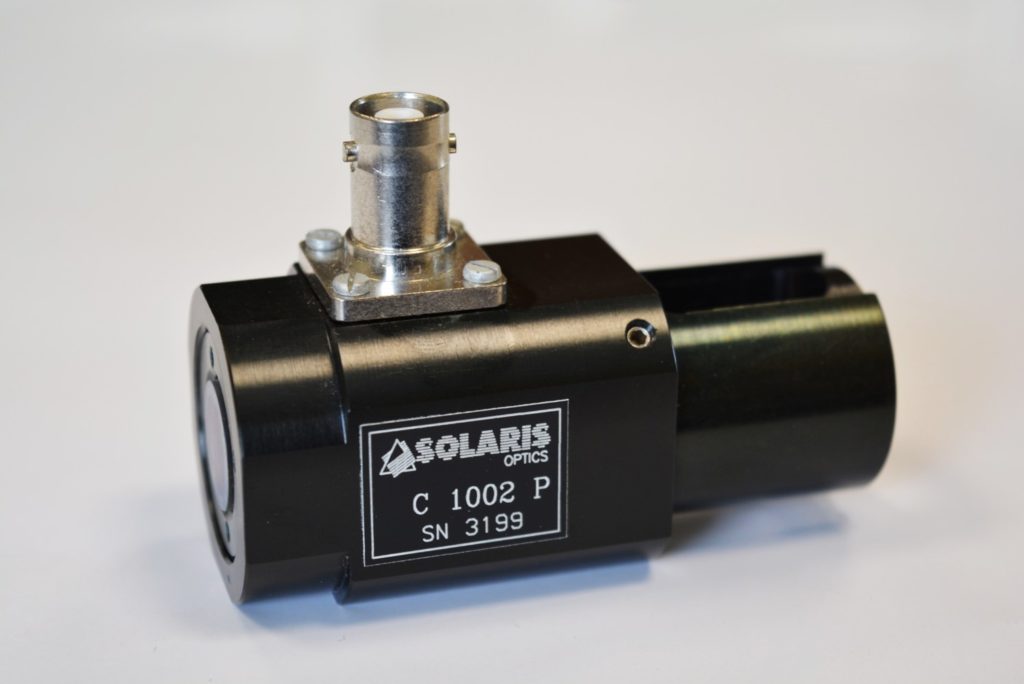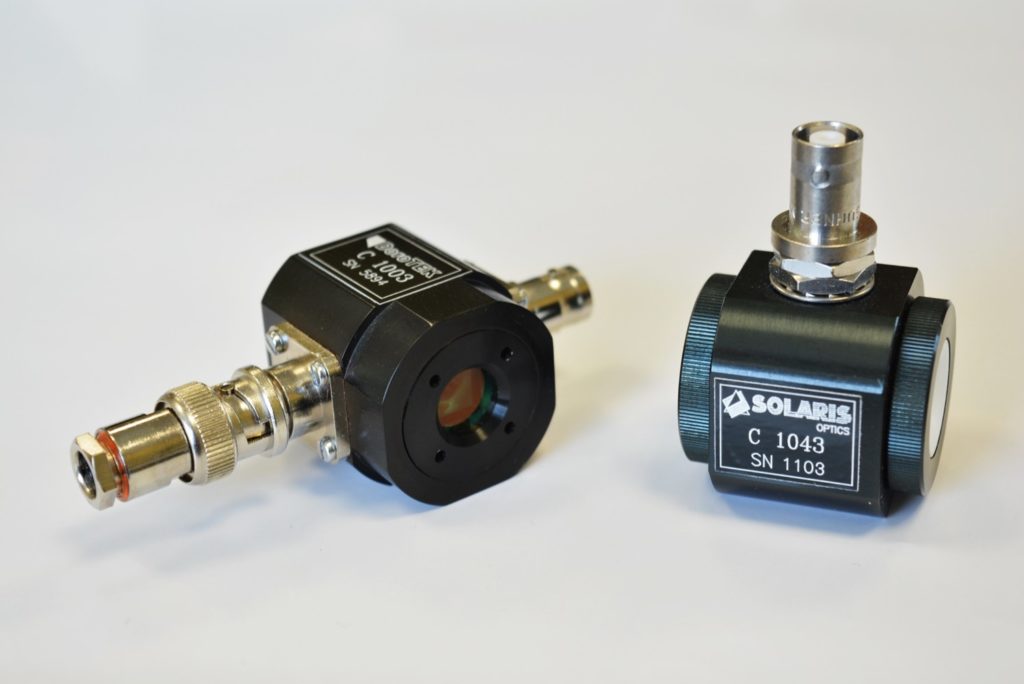Electrooptical modulators
Pockels cells and drivers
Explanation of the VIGO Infrared Detector Programme
In many laser applications, modulation of the laser radiation is required. One of the most important methods of modulation is to use the electro-optical effect in crystalline material. The linear special case is called the Pockels effect.
Electro-optic modulators are based on the effect of voltage-induced birefringence. Pockels cells represent one type of EOM’s that allow linearly dependent controllable birefringence via an applied voltage to the cell. The cell contains a uniaxial crystal that becomes biaxial if an electric field is applied. If the new induced axis is aligned at 45° to the plane of polarisation of an incident light beam, then this is split into two partial beams polarised perpendicular to each other. The partial beams pass through the crystal at different speeds due to the induced different refractive indices. This induced birefringence ∆n is proportional to the applied electric field E. A controllable bevel shift between the two partial beams thus results over the crystal length l, which is then used for beam modulation.
With the help of this effect, the laser parameters degree of polarisation, amplitude and phase can be varied.
DoroTEK supplies Pockels cells based on the crystals KD*P and LiNbO3. On request, complete modulation units consisting of the Pockels cell, the polariser and a retardation plate can be manufactured.
Selected technical parameters of the Pockels cells
Parameter | KD*P-Cell | LiNbO3- Cell |
Spectral range | 0,35 – 1,5 µm | 0,4 – 4,5 µm |
Contrast ratio | 1000 : 1 | 300 : 1 |
Destruction threshold | 800 MW / cm2 | 300 MW / cm2 |
Transmission | > 98 % | > 98 % |
Quarter-wave voltage for 1064 nm | 3,2 kV | 0,8 kV |
The data sheets of the Pockels cells are available for download here : Modulatoren

KD*P Pockels cell with polariser

LiNbO3 Pockels cells

KD*P Pockels cell with Brewster window

KD*P Pockels dry cell

Pockels cells (laser modulators)




